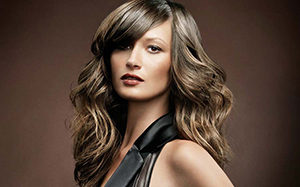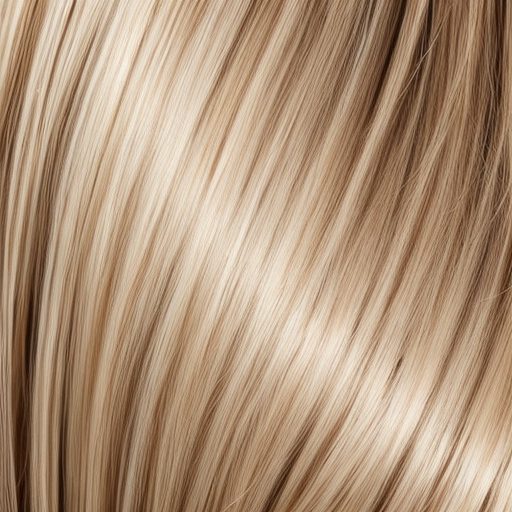
Unique Hair Solutions.
We have heard thick-haired gals say, “my hair feels thin lately.” It may feel thinner to them, but not to stylists who touch several types of hair all day. In this post, we provide unique hair solutions tailored to your hair type and concerns. Discover expert advice and tips for maximizing thickness and achieving the healthy, voluminous hair you desire.
About thick or thin hair.
Technically the thickness of your hair refers to the size of your individual hair strand, not the amount of hair you have. But “thick thin” are the words people most often use to describe how the amount of their hair appears. Length, density, and texture are how we classify hair in a salon for appointments. Appointments are time-based and thick hair requires more time. Knowing how we term hair length and density will give you a better idea of what to expect during salon visits. To keep things simple, when we refer to the amount of hair, or overall density, we also use thick/ thin to describe your hair.
Thick or thin hair in humans.
Ethnicity, age, genetics, and hair color, decide how many hair strands you have, but an average scalp consists of about 80,000 to 120,000 hairs. The vast difference of 40,000 strands depends on cultural background.
Environmental factors like improper haircare, aggressive styling, poor diet, medications, or a recent illness like COVID, can all contribute to a decrease in hair density. Very rarely are they permanent though. Plus, you can change things in your environment to promote a healthy scalp which begets healthier hair.
I always say you can’t know where you are going if you don’t know where you began. Learning how dense your hair is when you are a young adult may prevent hair loss concerns later.
Hair Visibility Test
Testing to see if you have thick or thin hair can be done by just looking at it. Pull your hair forward and hold it flat between your pointer and middle finger. If you can’t see through your hair, it is thick, but if you can easily see through it, it’s thin. Some visibility means you have average hair density.
Holding a contrast color behind your hair can help you see it better. If you don’t get regular haircuts (you really should) hold hair 2-3 inches from the bottom so you’re looking at your actual hair and not just split ends. Then schedule a haircut!
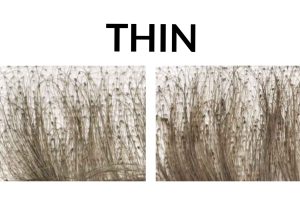
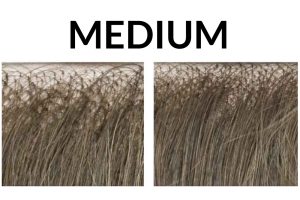
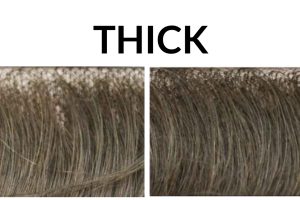
Why you need regular haircuts.
Once hair splits past what a haircut “trims”, the diameter of your hair keeps getting smaller. Skipping regular haircuts is a sure fire way to thin, damaged looking hair.
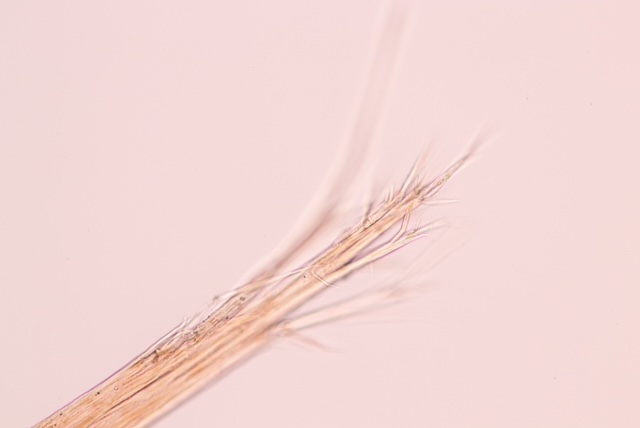
Hair diameter & color.
Measured in millimeters, the average human hair is about 0.016 to 0.05mm thick. Diameter can affect if hair feels fine or course to the touch, but has less of an overall impact on hair’s “thickness”.
But the diameter of hair and your hair color are very connected! Natural blonde strands are smaller in diameter and dark strands are bigger. The inner part of the hair shaft is called the medulla. Brunettes have an extra layer around the medulla that natural blonde hairs don’t have.
Mother Nature’s balance.
Nature compensates for the skinny strands by giving a natural blonde more hair follicles. More follicles mean more hair. Blonde hair has an average of 140,000 strands, while a non-blonde has a scalp density of around 100,000 strands of hair.
Seems like it would be opposite doesn’t it?
Blondes see thinning sooner.
Sounds like a lot, but the smaller strands and color transparency of blonde hair make it appear thinner to start with. So when the natural hair loss from aging starts, a blonde is far more likely notice it sooner than a brunette would, which is so true! Most hair loss concerns we hear in the salon come from our blonde clientele.
Shedding cycles of our hair increase with each normal hormonal change in life, and that’s not even including the additional shed that occurs after each pregnancy. Many people don’t realize the first normal dip in our hormones begins as early as our 30’s. Getting in front of it by being proactive with vitamins and products makes a big difference later!
Natural blondes have more hair follicles.
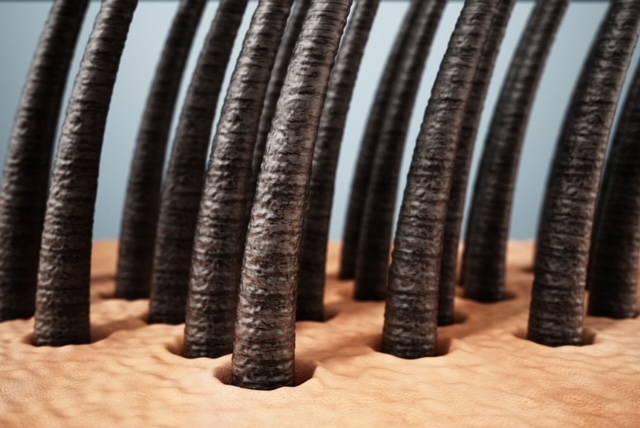
Do blondes have more fun?
Dark hair magnified with a visible medulla.
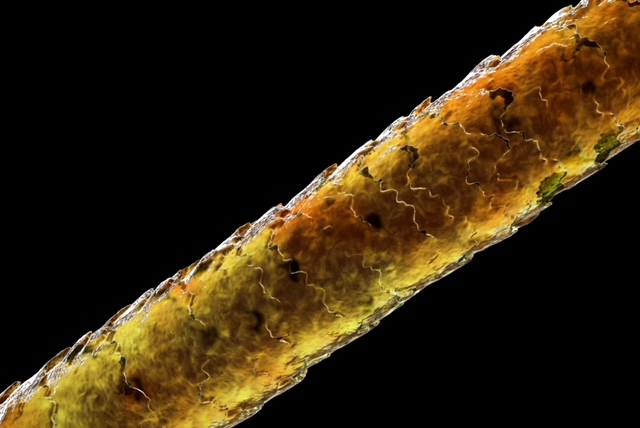
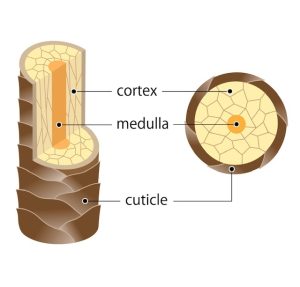
Brunette strands are thicker and stronger because of an extra layer around the medulla.

Ponytail Test
Another effective way to tell if your hair is thick or thin is by paying attention to how many times you twist to make a ponytail. Dense hair won’t have much room, but wrapping a band several times is normal for thin hair.
- Thick hair: 1-2 times
- Average Hair: 2-3 times
- Fine/Thin hair: 3-4 times
Long or Short Hair
Length is easy to see. We use this chart for pricing haircuts and color. Generally if long hair is fine or thin, it takes less time to work with than short thick hair. Hair strand size is everything! Even for short bobs and pixies.
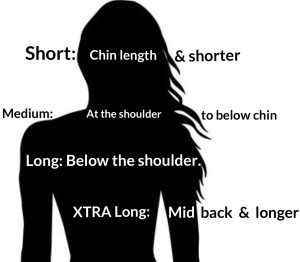
Whether your hair is thick or thin, long or short, knowing how to describe your hair with salon terminology will help you and your stylist communicate about services & products during visits.
Gemy 💎

